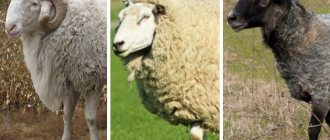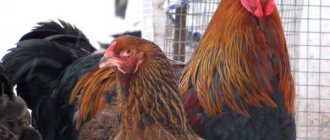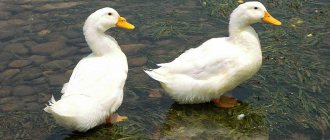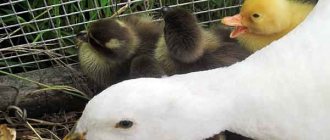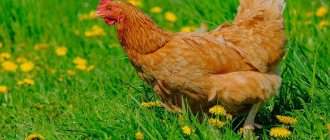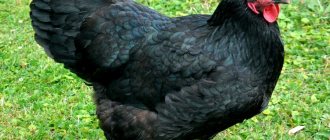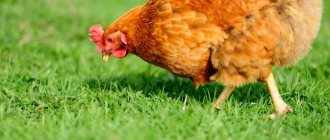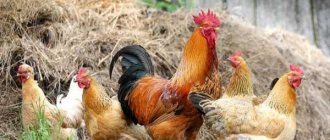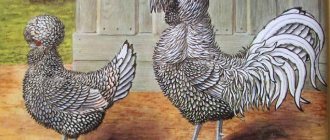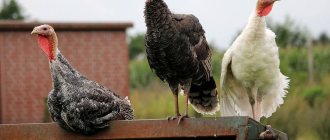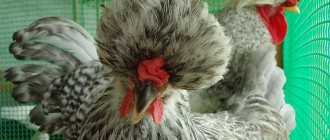Ostriches live only in Africa. Ostrich-like birds live on other continents, in Australia and South America. Outwardly, they are similar to African individuals, but have significant differences in skeletal structure and plumage.
The main habitat is savannah and semi-desert, although American birds love the foothills. They move easily over rocky hills. Farmers prefer to breed African and sometimes Australian birds. They are less aggressive and have good productivity. What are the characteristics of ostriches and similar species? What are the similarities and differences between birds?
Description of appearance and features
Nature has endowed ostriches with very large body sizes. The live weight of the birds reaches 150 kg, and their height is approximately 2 meters. The ostrich has powerful limbs and a massive neck. The wings are slightly raised in relation to the body. On the head are the eyes, which are framed by long eyelashes. Ostriches have curly feathers, but their color varies. This depends on the gender and species to which the bird belongs.
Today, in order to meet these beauties, you don’t have to go to distant Africa; you can easily visit an ostrich farm, of which there are many in Russia.
Ostriches completely lack the ability to fly, but if an unforeseen danger arises, they can escape from it, developing a very decent speed - about 70 km/h. Birds live in groups of several individuals; in natural conditions, various herbivores often coexist with them.
In their natural habitat, ostriches are characterized by omnivory. The hot climate is not conducive to the growth of various delicacies. The preferred food is vegetation, but birds can pick up leftovers from the meals of the predatory inhabitants of the savannah. If the need arises, the bird can do without food. This also applies to drinking water.
When the mating season begins, there are several females per male. After fertilization is successfully completed, all eggs are laid in a common nest. The father of the family incubates the offspring, leaving the female he likes more than the others to help.
The average weight of an ostrich baby at birth is 1000 grams. As soon as they hatch, the chicks are able to move normally, see perfectly, and after 24 hours they can get their own food.
Breeding ostriches in captivity requires compliance with certain conditions, which include proper care. In this case, individuals live well until the age of 70. Most often, these birds are kept on farms to produce eggs and feathers, which are highly valuable. There is also a very good demand for meat and leather materials. Races involving ostriches and horseback riding on these birds are no less popular.
General Features
Breeding ostriches on a farm can be profitable due to the following features of these birds:
- the tender lean meat of giants has a pleasant taste, contains virtually no cholesterol or fat, and does not become tough even after long heat treatment;
- Ostrich fat has medicinal properties, so it is used to make creams and ointments;
- soft, strong ostrich skin does not crack, does not become dry and hard; from one adult bird you can get up to 1.5 square meters. m of material for the production of bags, belts, shoes;
- Ostrich feathers are very beautiful, they are used for decoration, as well as for collecting dust from fragile parts and microcircuits in the electronics industry; You can get up to 2 kg of feathers from one bird;
- Giant eggs are quite large, their weight often exceeds 1 kg, in addition, they are healthier than chicken eggs due to the content of large amounts of vitamins and low cholesterol and unsaturated fatty acids.
In terms of keeping ostriches:
- unpretentious in care and nutrition (practically omnivorous and can do without water for some time);
- grow quickly;
- perfectly adapt to both hot (up to +56 °C) and cold climates (up to -16 °C);
- rarely get sick;
- live up to 70 years.
However, breeding this bird requires large expenses at the initial stage. Construction of a farm will require considerable investment.
In addition, the giants of the bird world love space - the minimum area of a closed room for 30 birds should be 150 square meters. m, open enclosures - 1.5 thousand square meters. m.
About species and breed diversity
The most popular economic breeds that can be bred in the household are:
Each of the listed types has its own characteristics.
African ostriches
The breed itself can be divided into four varieties:
- black African;
- Namibian;
- Zimbabwean;
- Masai.
The last subspecies has the most aggressive character. But then the breeders found a way out: in order to breed a bird with good performance in meat products, they cross the Maasai with the Zimbabwean breed. The appearance of the African ostrich will not leave anyone indifferent because of its beauty. The feather color contains both white and black.
These birds must be kept at a temperature range from +22 to +36 degrees. It is necessary to build a large walking area and a winter room. First of all, experts bred ostriches to produce beautiful feathers and durable leather products. Having been neighbors with people for a long time, huge birds are easily tamed and make contact with their owner.
Nandu
To this day, scientists have not come to a consensus about the close relationship of the rhea with the black African variety. Externally, these birds are very similar, with an average weight of about 30 kg and a height of 130 cm.
A special distinguishing feature is the absence of feathers on the head and neck, and the color of the feathers on the body is a characteristic gray color. These ostriches prefer to eat food of plant origin.
The first difference from other brothers lies in the unusual color of the plumage. It can be gray or brown. Birds take second place due to their unusually high growth. The second distinctive feature is the absence of flight wings and underdeveloped skeleton. Among specialists, there are not many people who can distinguish birds by gender, looking only at their appearance.
Character and lifestyle of the African ostrich
Ostriches love to be in the company of antelopes and zebras and migrate by following them.
Due to their good eyesight and large growth, they are the first to notice and give a signal to other animals about approaching danger. At this time, they begin to scream loudly and develop a running speed of more than 70 km per hour, and a step length of 4 m. Small ostrich chicks, one month old, reach up to 50 km per hour. And even when turning, their speed does not decrease.
When mating season begins, one black African ostrich takes over a certain territory of several kilometers. The color of the neck and legs become bright. He does not allow males to enter his chosen place, but treats females kindly.
Birds gather in small groups of 3–5 individuals: one male and several females. During mating, the African ostrich performs an unusual dance. To do this, he spreads his wings, fluffs his feathers and kneels.
Then, throwing back his head and placing it on his back, he makes rubbing movements against his back.
At this time, he moans loudly and hisses, attracting the attention of the female. Even the wings acquire a brighter and more saturated color
If the female likes the dance and the ostrich itself, she heads towards him, lowering her wings, and bows with her head. Crouching near him, she repeats his movements, attracting other females. This creates a harem, where one female will be the main one, and the rest will constantly change.
At this time, ostriches become very bold and aggressive. When a dangerous situation arises, they run towards the enemy without fear and rush into battle. They fight with their legs. The kick has a very powerful force and can kill to death. Therefore, not every predator decides to meet this bird.
There is a myth that ostriches hide their heads in the sand when they see danger. Actually this is not true. A female sitting on eggs during a dangerous situation puts her head and neck on the ground, trying to hide and be unnoticed. Ostriches do the same when meeting predators. And if you come close to them at this moment, they rise sharply and run away.
Productive characteristics
In the wild, it is typical for most ostriches to begin laying eggs when they reach the age of 4 years. But when kept on a farm, this period is halved.
The benefits of ostrich farming can be seen using the following example:
- birds have good egg production - up to 80–100 eggs per production season;
- average egg weight up to 2 kg;
- incubation period 42–45 days;
- females are highly productive up to 35 years of age;
- males are 5 years older;
- The fertilization percentage of egg production is 90%.
American rhea
These birds get their name because of the characteristic call they make during the nesting period. They shout "nan-doo".
Representatives of the American variety should be bred if you need to get more eggs. Females lay eggs regularly and abundantly. In one clutch they are able to lay about 18–20 eggs weighing 1.2–1.3 kg and 15 cm in diameter.
These birds are small. Adults reach a height of no higher than 1.5 m. The average body weight is about 20–25 kg. The largest representatives can reach a weight of 40 kg.
A characteristic feature of rheas is that their neck and head are covered with feathers. The plumage on the body is colored in brownish-gray shades. Males are slightly darker than females.
Birds have 3 toes on their feet. The wings are long, with marigolds at the ends. Thanks to the presence of such protection, rheas are not as timid as their African relatives. When in danger, they actively defend themselves with their wings and emit a hiss.
Since rheas are capable of swimming well, when keeping them at home, it is advisable to organize a small pond for them. If it is present, the birds will develop more actively and faster.
So, the ostrich business is attracting an increasing number of businessmen and investors. Demand for coward meat, skin, feathers and eggs remains high. For the business to be successful, it is important to choose the right breed of ostriches and follow the recommendations for their maintenance.
It is important to know
Despite the fact that ostriches treat people well, during the breeding season the males show hostility that is unusual for them in normal times. During this period, farm staff must clearly understand and follow safety measures. To calm the males, special hooks are used, with the help of which the birds are knocked to the ground in order to disorientate them. If this does not help, then you can close the head of the breeder using a fabric bag in which a special slot is left for the beak.
What you need to know about feeding young animals?
After the ostrich chicks are born, experts do not advise giving them food. To saturate them with high-calorie substances, they use the yolk sac, the supply of which is enough for 3 days. From the fourth day you can give finely chopped greens mixed with feed intended for chickens.
fermers.ru
Natural enemies
Ostrich eggs are preyed upon by many predators, including jackals, adult hyenas and scavenger birds. For example, vultures use their beaks to grab a large and sharp stone, which they throw on top of an ostrich egg several times, causing the shell to crack.
Immature, recently hatched chicks are also often attacked by lions, leopards and cheetahs. As numerous observations show, the greatest natural losses in the African ostrich population are observed exclusively during the period of incubation of eggs, as well as during the raising of young animals.
However, one should not think that ostriches are too timid birds. Adults are strong and can be quite aggressive, so they are quite capable of standing up, if necessary, not only for themselves and their fellows, but also to easily protect their offspring. Angry ostriches, without hesitation, can attack people who encroach on the protected territory.
Famous breeds of ostriches – which one to choose?
It is well known that the ostrich is one of the largest birds existing in nature. This assumption is correct, since these animals can reach a weight of more than one hundred and fifty kilograms. The homeland of ostriches is considered to be Africa and Australia with semi-desert terrain, which is not limited by any vegetation. Today, almost all breeds of ostriches, photos and names of which will be discussed in this article , can be purchased and raised at home. Which ones are the most productive?
Ostrich breeds, photos and names
What do fleet-footed birds eat?
Ostriches are omnivores. Of course, the main food for them is plants (seeds, fruits, flowers, young shoots), but they can eat the remains of animal food from a predator, and sometimes also feed on insects, rodents and reptiles. As for drinking water, ostriches are not very whimsical here either. And is it really possible to be whimsical while living in hot Africa? Therefore, the bird’s body is adapted to rare drinking and tolerates it well.
Great rhea
The most famous breeds of ostriches
The word ostrich is translated from Greek into Russian as “camel sparrow”; it is this designation that quite accurately conveys many of the characteristics of this bird.
The following breeds of ostriches are distinguished:
• African ostrich. • Ostrich Nandu. • Ostrich Emu.
African ostrich. Speaking of ostriches, the first thing that comes to mind is the African ostrich; according to modern classification, this is the only true species of ostrich existing on the planet today. The remaining breeds cannot be classified as ostriches in principle; they are called only its closest relatives. The African ostrich is large in size, its height can be compared to the height of an adult stallion, which is a little more than two and a half meters. The weight of an African ostrich can often exceed one and a half centners.
African ostrich
Features of the African ostrich:
- although the ostrich is a bird, it cannot fly. The thing is that its bones are not hollow enough, which does not allow it to rise into the air, and besides, the ostrich does not have a keel; - an ostrich can run extremely fast for its height and weight; - the ostrich has a small head compared to the rest of the body. A large brain could not fit into such a head, so the bird is not very smart, but it has eyes that are recognized as one of the largest that can be found in animals; — another distinctive feature of the ostrich is the presence of two toes on the foot, one of which is topped with a terrifying claw.
African ostriches are usually divided into the following subspecies:
• Malian ostrich. • Somali ostrich: which is distinguished by the brown color of its feathers. • Masai ostrich: has feathers colored in a bright red hue.
Nandu. The next type of ostrich, or rather the brother of the African ostrich, can be called Nanda. Its homeland is considered to be South America, which is why it is often called the American ostrich. Similar features of these two breeds include the lack of flying skills and the same physique, although the American brother is smaller.
Rhea ostrich
Differences between the American ostrich and the African one:
- presence of three toes; - thickly feathered neck; — use of wings for improved acceleration; - the presence of hard formations on the wings, which have a common nature with the claws.
Emu
Emu is an “ostrich” from the Australian continent, which is home to the most outlandish and unusual creatures of this world. The emu is another large bird and is the second largest after the African ostrich. The emu is also not an ostrich, although it is often called that. It belongs to the order Cassowariformes. There were times when the Emu was called a beast, but now there is no doubt that it is a bird.
The emu is quite similar in appearance to the Nandu and the African Guest, but it is a completely peculiar and unique bird. His height is less than that of an African, about 2 meters, and his weight does not exceed 60 kg. In addition, the Emu has three toes; in our world, only the African ostrich has two toes. The plumage of the Emu is also unique. It looks more like wool, the feathers are not interlocked and stick out scatteredly to the sides. Another rare Australian bird, the Kiwi, distant relatives of the Emu, has this type of fur or feathers.
Like all ostrich-like ratites, Emus are excellent runners, but besides this, they also love to swim. A common sight in the Australian expanses is Emu splashing in shallow water bodies. The Australian Emu is famous for its easy-going nature and peaceful nature. They get along well with people and are ubiquitous on ostrich farms around the world, where they are raised for their valuable meat, skin, feathers and eggs. Which, by the way, have an unusual blue-green color.
It must be said that only recently has Emu been “left alone.” Due to the fact that Australian birds damaged farmland, they were mercilessly exterminated. Hunting dog breeds were even specially bred for these purposes.
In addition to the Emu, the Australian continent and the tropics of New Guinea boast another unusual bird - the cassowary. Translated from the indigenous language, “cassowary” means “horned head.” The Cassowary, like its close relative the Emu, boasts a respectable size. With a height of 1.5-1.8 m, it weighs approximately 60 kg. The cassowary differs from the emu in having a horny process on its head, which many call a “helmet.” The cassowary is in turn divided into the helmeted cassowary, the muruca and the orange-necked cassowary.
In addition to the “helmet” on its head, the cassowary has a brightly colored neck and elegant earrings. Two earrings will indicate a helmeted cassowary, one - an orange-necked one, and their absence - a muruc. The cassowary is a dangerous and aggressive bird. The claw on its three-toed paw is very sharp and long, and the Cassowary often uses it, especially when scared or cornered.
In 2004, the cassowary was included in the Guinness Book of Records as the most dangerous bird in the world; meeting one on one often promises death.
Ostrich breeds
The ostrich is the largest bird in the world; on average, its height reaches 2–2.5 m and its weight reaches 150 kg. It has a long neck without feathers, its body is covered with large curly feathers, it cannot fly, but it runs remarkably well, reaching speeds of over 50 km/h. Color may vary among individuals of different breeds. The birds' homeland and main habitat are Africa and Australia. In our latitudes there are ostrich farms where the main agricultural breeds are bred.
African ostriches
The African ostrich is the largest representative of these birds ; it lives in a dry, hot climate, mainly on sandy soils, and feeds mainly on vegetation. The breed is represented by four species, each of which has its own characteristics.
Black
This variety is characterized by high growth, often up to 270 cm, and an impressive weight of 150–160 kg. The birds are the largest representatives of the breed and have a dense build. Such individuals are unpretentious to the conditions of detention and can easily withstand temperatures from +35 to -20 ° C, which makes it possible to breed them in almost any climatic conditions.
The breed's egg production is 50–80 eggs per season from one female. Ostrich eggs are very large compared to specimens of other birds: their diameter is about 15–20 cm, weight is 1.5–2 kg.
Namibian
This subspecies is close in appearance to black ostriches, but is smaller in size: the average height of an individual is about 2 m, weight is up to 70 kg, while males are often smaller than females. A distinctive feature of the color is the blue neck, sparse plumage.
The breed's favorite habitat is savannas, with the exception of particularly dry areas. At the same time, birds are able to tolerate heat up to +50 °C, independently regulating heat exchange.
Egg production is average - about 40–45 eggs per season, weighing 1.1–1.5 kg.
Zimbabwean
This bird is not inferior in size to its black counterpart: height is about 2–2.5 m, weight of a male is 150 kg, a female is 120 kg. This species has blue skin on the neck, and the legs and beak are dark gray.
As a prominent representative of the African breed, the Zimbabwean variety has good egg production: 40–50 eggs per season, while producing very large specimens weighing 1.5–2.1 kg.
Masai
This breed is considered only half domesticated, since the bird gets along quite poorly with people. She lives in East Africa. In terms of external characteristics, this type is similar to the classic representative of the African breed, but the skin of the head, neck and legs has a pink-red tint.
Masai ostriches have very low productivity and are used in poultry farming only for crossing in order to obtain more productive and docile individuals.
The Australian species, according to its characteristics, can be classified as both ostrich-like and cassowary. This is a large bird, up to 170 cm tall and weighing about 55 kg. Unlike ordinary ostriches, it has three-toed feet and does not have a bladder. The plumage is hair-like, more reminiscent of wool, the color of the cover ranges from gray to dark brown with brown spots. It is noteworthy that males and females of this breed are practically indistinguishable in appearance.
Emu egg production is average; in one clutch, the female brings 7–8 dark blue eggs, 700–800 g each, which are then incubated by the male for 55–60 days. From a productivity standpoint, it is effective to farm emus to produce meat that has a very low fat content (about 1.5%) and is dietary.
Structural features
Nature has awarded ostriches with overall body dimensions. The maximum weight of an adult bird is 150 kg, and the birds reach a height of 2 m .
Ostriches have other interesting biological features. Their fragile and shock-sensitive skull is formed from thin, spongy bones filled with air. The brain of a mature bird is no larger than a chicken egg and weighs only 30-40 g, so these birds cannot remember information.
The head, flat at the top, is small compared to the body. There is a bald spot on top. The ears are openings located in the back of the head; they are closed by valves. The nostrils are covered with a sensitive membrane that helps assess the quality of water and food. Therefore, ostriches should not be given fine-grained food: this can lead to suffocation . The beak is wide and flat.
Expert opinion
Novoselova Sofya Ivanovna
Farmer. 20 years of experience.
Ask a Question
The massive neck is quite thick, there are only 19 thoracic vertebrae. But the cervical region is fragile. If an ostrich inadvertently sticks its head into a narrow hole, then, trying to get out, it can separate its head from the upper cervical vertebra and die. This must be taken into account when constructing a farm fence.
The large eyes, occupying a third of the volume of the head, are covered by the upper and lower eyelids with thin pubescence, reminiscent of long eyelashes. The organs of vision are also equipped with a flashing membrane (third eyelid) to protect against sand and dust. Due to its size and special arrangement of its eyes, the bird has excellent vision and a broad horizons.
The giant has powerful, strong lower limbs with bare shins, thighs, massive fingers supporting an impressive body weight, and claws up to 7 cm.
Did you know that the ostrich can run at a running speed of up to 70-80 km/h?
Not really
Its small wings, slightly raised in relation to the body, are not suitable for flight; the bird leads an exclusively terrestrial lifestyle. But they help maintain the balance of the body, and in the heat the ostrich fans itself with them like fans, cooling the body.
The flat sternum, which is a plate, is not equipped with a keel. The muscles in the chest and wings are underdeveloped. Curly feathers help keep you warm in cold weather.
The bird's digestive system is also unusual. It is characterized by an intestine elongated in the posterior part and a 129-centimeter paired cecum, where the breakdown of plant food occurs. The length of the large intestine is more than 8 m, the small intestine is 5.4 m. Thanks to this structure, the path of plant fiber is quite long, and the microflora is well developed and promotes the digestion of food.
Also a distinctive feature of the digestive tract is the absence of goiter. Food accumulates in the forestomach. The stomach itself is large, thick-walled, and has a calloused border. Along with food, sand and a large number of small pebbles get into it, so plant food is quickly crushed, facilitating the chemical breakdown of substances in an acidic environment.
Giants have a closed pelvis. Their pubic bones are fused, and the excretory system consists of the anus and genitourinary openings. Unlike their flying relatives, ostriches have a bladder.
What is the best breed to breed?
Breeding ostriches will become economically profitable if you clearly define what goals you are pursuing: obtaining eggs, meat or waste-free production. In addition, it is important to remember that birds of different breeds have different temperaments and requirements for living conditions. Which breed is most suitable for home breeding? Let's consider several options:
- If the purpose of poultry breeding is to obtain meat, then emus are the best choice in terms of characteristics: they are quite large, in addition, their meat has a high dietary value.
- If the purpose of keeping ostriches is to obtain eggs, it is worth taking a closer look at the rhea breed. These birds are not too whimsical, small, but capable of providing regular and abundant laying of eggs.
- Farmers consider the African ostrich to be their undoubted favorite. This breed not only has high productivity rates, but also versatility: not only eggs and meat, but also skin, feathers and poultry fat are used for various purposes. In addition, representatives of this breed live a very long time and have an easy-going character, which is important when kept on a farm.
How to breed ostriches at home
To start breeding ostriches, you need to equip them with a comfortable room and paddock for keeping them, prepare food in advance and select the right breed.
The main features and rules for breeding these birds at home for beginners will be described below.
Breeding ostriches: where to start
If you decide to breed ostriches at home, you should first of all take care of a suitable room for them. The ideal option would be when a part of the farm adjacent to the pen is allocated for keeping birds (Figure 1).
Figure 1. Housing and walking area for maintenance
Having decided on the premises, prepare all the necessary documents and obtain permits. You will also need helpers: handymen, watchmen, veterinarian or livestock specialist. Take care to stock up on the necessary feed and equipment. After completing all the preparatory activities, purchase ostriches.
Peculiarities
Ostriches are exotic birds for our country, although recently this business has been considered one of the most promising.
Among the features of ostrich breeding in Russia are the following:
- Smooth floor covered with dry bedding. During the period of laying eggs, it is necessary to sprinkle it with sand so that the female ostrich can build a nest in it.
- For young animals, you will need a separate room in which it is possible to maintain the air temperature at +24-25 degrees. In this case, the area of the premises must meet the requirement of 1 sq.m per chick, and after two months these figures increase by 2 times.
- After 6 hours, the hatched ostriches are moved to the pen allocated for them. If they hatch in the warm season, then after 3 days it is recommended to take them outside to a pen. Then you can start feeding the ostrich chicks.
Conditions
The hatched chicks are either kept in a specially designated room or moved to an outdoor pen (Figure 2). It all depends on the time of year and ambient temperature. However, you should know that ostrich chicks are very susceptible to the influence of the outside world. Therefore, wherever they are kept, chicks should be kept separate from adults for 6 months after birth (Figure 3).
Since ostriches grow very quickly, a significant area should be provided for the growing young animals.
For normal development, ostriches also need fresh air. Therefore, walks should be carried out even in frosty weather.
It is important to ensure that the walking area is not icy to avoid injury to the birds. Pastures should be fenced, and paths for staff should be laid between individual paddocks
Figure 2. Features of keeping chicks
Pens for keeping adult birds must be equipped with special canopies so that the birds have the opportunity to shelter under them from bad weather
It is important to maintain the height of the fence of the pen: it must be at least 2 meters. At the same time, the pen itself must be made of reliable material, especially in the upper part
And the corners of the pen should be rounded to prevent possible injuries to the birds. Make sure that small animals cannot enter the pen through the fence.
Rules
To get a healthy bird capable of a full life, it is very important to follow the rules when caring for young animals. Figure 3
Keeping chicks and adults together
Figure 3. Keeping chicks and adults together
The basic requirements for caring for ostrich chicks are as follows (Figure 4):
- On the day of their first walk, the ostrich chicks are given access to food and water. The feed contains finely ground alfalfa with the addition of mixed feed containing 19%-24% protein. Walking is carried out 2 times a day, and its duration is 30 minutes.
- In addition to the main food, the chicks are fed boiled eggs and cottage cheese as sources of protein.
- Chicks aged 1 to 4 months need food containing 12% fiber and 18% protein.
- Babies, just like adults, need access to small pebbles, which are poured into a separate feeder. The bird uses them to grind food better, since it does not have teeth.
- If you practice grazing chicks on a pasture, remember that the chicks should not go there hungry, otherwise they may overeat on alfalfa stalks, and, accordingly, the death of the young.
Figure 4. Hatching chicks in an incubator
The grass on the pasture should be low and free of dew, since moisture can lead to the emergence of infectious diseases among chickens and their death.
Lifestyle and habitat
Giant birds are the original inhabitants of the Australian continent, the island of Tasmania.
They prefer savannas, not too overgrown places, open spaces. Birds are characterized by a sedentary life, although in the west of the continent they move to the northern part in the summer and to the southern regions in winter. The emu most often lives alone. The union of emus into a pair, a group of 5-7 individuals, is a rare phenomenon, characteristic only for periods of nomadism and active search for food. It is not typical for them to constantly flock together.
Farmers hunt birds if they gather in large numbers and cause damage by trampling crops and destroying shoots. While “swimming” in loose earth and sand, the bird makes movements with its wings, as if swimming. Wild birds inhabit areas where trees have been cut down and are found along roads.
Adult birds have almost no enemies, so they do not hide in the open spaces of the fields. Good eyesight allows them to escape at speeds of up to 65 km/h in case of danger. The enemies of the emu are feathered predators - eagles, hawks. Dingo dogs encroach on large birds, and foxes steal eggs from nests.
Emus prefer uncrowded places, although they are not afraid of humans and quickly get used to them. There are no maintenance difficulties on emu farms. The emu is a bird well adapted to different temperature conditions. The Australian giant tolerates cold temperatures down to -20°C and summer heat up to +40°C.
The birds are active during the day; the emu sleeps at night. Rest begins at sunset; the ostrich falls into deep sleep, sitting on its paws. Any irritants interrupt rest. During the night, the emu wakes up every 90-100 minutes. In general, birds sleep up to 7 hours a day.
Thanks to the increased interest in birds, special farms for the industrial breeding of feathered giants have emerged in China, Canada, the USA, and Russia. They adapt well to temperate and cold climates.
Reproduction
Ostriches in the zoo of the city of Krasnoyarsk (Siberia, Russia) The ostrich is a polygamous bird.
Most often, ostriches can be found in groups of 3-5 birds - one male and several females. Only during non-nesting time, ostriches sometimes gather in flocks of up to 20-30 birds, and immature birds in southern Africa - up to 50-100 individuals. During the mating season, male ostriches occupy a territory of 2 to 15 km², driving away competitors. When the time comes for breeding, male ostriches display in a peculiar way, attracting females. The male lowers himself onto his tarsus, beats his wings rhythmically, throws his head back and rubs the back of his head against his own back. During this period, the male’s neck and legs become brightly colored. When competing for females, males make hissing and other sounds. They can trumpet: to do this, they take in a full crop of air and forcefully push it through the esophagus - while doing this, a semblance of a dull roar is heard.
The dominant male covers all the females in the harem, but forms a pair only with the dominant female and hatches the chicks with her. All females lay eggs in a common nesting hole, which the male scrapes out in the ground or sand. Its depth is only 30-60 cm. Ostrich eggs are the largest in the bird world, although relative to the size of the bird itself they are small: egg length - 15-21 cm, weight - from 1.5 to 2 kg (this is approximately 25-36 chicken eggs ). The shell of ostrich eggs is very thick - 0.6 cm, its color is usually straw yellow, less often darker or white. In North Africa, the total clutch usually consists of 15-20 eggs, in the south of the continent - 30, in East Africa the number of eggs reaches 50-60. Each female lays eggs apparently once every 2 days.
When the dominant female has laid all the eggs, she demands that the other females leave, rolls her own eggs into the center of the clutch (she distinguishes them by the texture of the shell) and begins incubation.
Ostrich egg compared to chicken and quail eggs
Masonry
The eggs are incubated alternately by females during the day (due to their protective coloration, blending into the landscape), and by the male at night. Often during the day the eggs are left unattended and heated by the sun's rays. Incubation lasts 35-45 days. However, often many eggs, and sometimes all, die due to insufficient hatching. The chick breaks the strong shell of an ostrich egg for about an hour, sometimes more. It rests one foot on the blunt end of the egg, the other foot on the sharp one, and hits one place with its beak until a small hole appears. Then he makes a few more holes like this. Then, in order to break its way out, the chick hits the shell with the back of its head, so African ostrich chicks hatch with hematomas on the back of their heads, which quickly disappear.
When the chicks hatch, the adult bird breaks the eggs, which are definitely spoiled (usually they lie on the edges). Flies flock to them and serve as food for the chicks.
Ostrich chick
Ostrich chicks hatch sighted, covered with down and capable of movement. A newly hatched ostrich weighs about 1.2 kg, and by four months it reaches 18-19 kg. The chicks leave the nest the day after hatching and travel with their father in search of food. During the first 2 months of life, the chicks are covered with brownish, hard bristles, then they dress in an outfit similar in color to that of the female. True feathers appear in the second month, and black feathers in males appear only in the second year of life. Ostriches become capable of reproduction at 2-4 years of age. African ostriches live like people, that is, on average 75 years.
The chicks are tightly attached to each other. If two groups of chicks get too close, they mix and cannot be separated. Parents fight with each other. The winners take care of all the chicks. Therefore, groups of chicks of different ages are often found.
